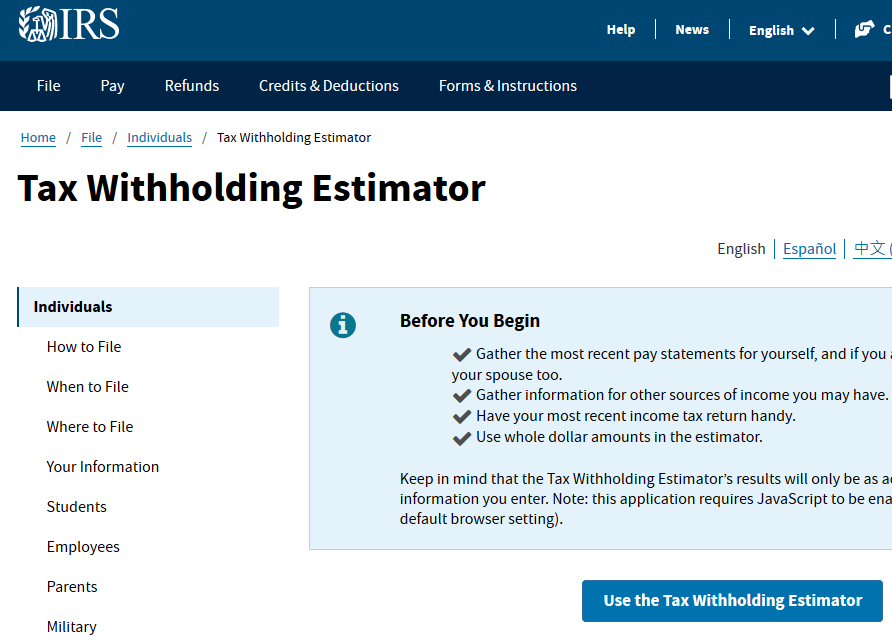IRS Tax Withholding Estimator Helps Retirees, Workers and Self-Employed
The improved and mobile-friendly estimator offers retirees, employees and self-employed individuals a user-friendly way to check their withholding. It also has features specially tailored to the unique needs of those receiving pension payments and ...
Mar. 10, 2020

The Internal Revenue Service is encouraging taxpayers to take control of the size of their refund using the Tax Withholding Estimator on IRS.gov.
The estimator has a “slider” feature to let users to choose the refund they want from a range of amounts based on the information they enter. The feature helps taxpayers set their withholding to get a large refund or more money in their paychecks throughout the year.
Withholding
Starting in 2020, income tax withholding is generally based on the worker’s expected filing status and standard deduction. Employers generally use withholding tables to determine how much tax to withhold and send to the IRS. Those who are not subject to withholding should make quarterly estimated tax payments during the year.
The improved and mobile-friendly estimator offers retirees, employees and self-employed individuals a user-friendly way to check their withholding. It also has features specially tailored to the unique needs of those receiving pension payments and Social Security benefits.
People with more than one job and families where both spouses work may need to adjust their withholding to avoid having too little withheld. Not paying enough during the year, either through withholding or by making timely estimated tax payments, may mean paying a penalty.
When to check
Taxpayers should check their withholding annually. They should also check when life changes occur, such as marriage, childbirth, adoption and when buying a home. The IRS recommends anyone who changed their withholding late in 2019 should do a Paycheck Checkup. Taxpayers who receive a tax bill after they file should use the estimator to ensure the right amount is being withheld for 2020.
Taxpayers can use the results from the IRS Withholding Calculator to determine if they should complete a new Form W-4, Employee’s Withholding Certificate.
Submitting a new Form W-4
Employees submit a completed Form W-4 to their employer, not the IRS. Beginning in 2020, all new employees must use the redesigned form. Employees who submitted Form W-4 in 2019 or before are not required to submit a new form. However, the new form must be used to adjust their withholding. New employees who fail to submit a Form W-4 will be treated as a single filer with no other adjustments. This means that a single filer’s standard deduction with no other entries will be considered in determining withholding.
The new Form W-4 is simpler than the old form and increases the transparency and accuracy of the withholding system. The new design replaces complicated worksheets with more straightforward questions that make accurate withholding easier for employees.
Self-employed
Those who have self-employment income will generally owe both income tax and self-employment tax. Form W-4 is primarily to be used by employees who are not subject to self-employment tax and does not compute self-employment tax. See Form 1040-ES Estimated Tax for Individuals and IRS Publication 505, Tax Withholding and Estimated Tax.
For more information see the Tax Withholding Estimator FAQs and FAQs on the 2020 Form W-4. Whether at home, at work or on the go, taxpayers can find answers to questions, forms and instructions and easy-to-use tools online at IRS.gov.
